A cavalryman spent more time with a horse than with his wife. It was from his back that he watched the world and it was there that he made his fame. As the years passed, the familiarity between the mounts and their riders grew, and finally THIS time came and it was necessary to say goodbye to the horse, which, due to its age, could no longer serve in the army. What happened to such longtime friends?
After their career ended, cavalry horses had to be secured somehow. Most often they were put up for auction and went to new owners. Some of such animals found themselves, for example, in the possession of horse-drawn carriage drivers from Niewiec. Although they no longer served in the army, the horses did not forget what it meant with the marching step and the whistleblower's trumpet.
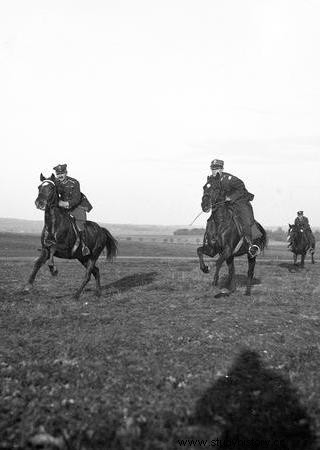
The Ulan horses had many years of training, which they did not forget about during their "retirement".
It once happened that the 27th Cavalry Regiment paraded in the town square in Nesvizh, and its trumpeter played the assembly signal. There was an incredible chaos at the stopping place of the carriages, because the former military horses wanted to rush to the lancers for a gathering and stand in a row of proud, lame horses. Only the whistleblower who sounded the "stop!" took control of the situation and detained the penalty and bay retired military.
The life of an old horse is happy
Although the tenants of the regimental stables changed regularly, among the military horses there were also those that lived to see their days in their home unit.
The 1st Krechowiecki Lancers Regiment had its - and how - Krechowiak. The horse belonged to the regiment commander. It was from its back that Colonel Bolesław Mościcki commanded his cavalry in the Battle of Krechowce and rode it until his death.
According to tradition, in a funeral procession, Krechowiak escorted his owner to his final resting place. For some time the horse lived in the estate of Duchess Franciszka Korybut-Woroniecka near Warsaw.
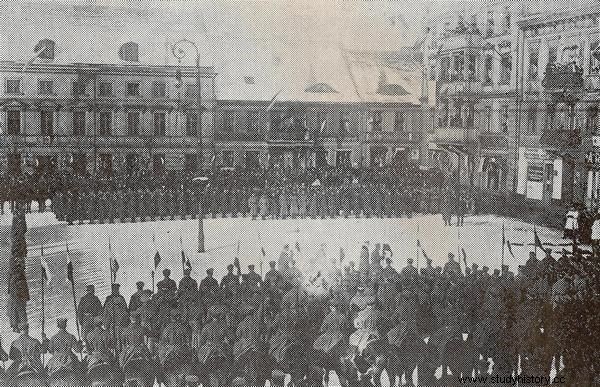
It is a well-known truth that when you put the uhlan's heart on your hand, the girl will always be in the first place, and only ... a horse in front of her (In the photo:the oath of the uhlan regiment in Gniezno in 1919).
However, when the Krechowiacy was re-formed, as the army of the Republic of Poland, the horse returned to the regiment, becoming the mount of each subsequent commander. From 1920, there was even a tradition according to which the handing over of Krechowiak was one of the indispensable elements of the ceremony of putting the regiment under the command of a new commander.
The horse, aging from year to year, knew the rules better than many young lancers. He was officially included in the list of merits, and the Ministry of Military Affairs granted him a lifetime food ration under a separate order.
On the day of the regiment's twentieth anniversary, it was even decorated with a special decoration for not taking off the regimental colors all this time. At the end of his life, Krechowiak, who had already lost all his teeth from old age, was fed with soggy bread and crushed oats.
Because of the charge taken at the front, the recruits are to salute!
A completely different story concerns a certain Grom, also known as a corporal. He started his career in one of the worst roles, namely, he was in carts pulling cannons on the battlefield. In the years 1918-1920 he served in the heaviest battles and never lost his spirit. During one of the clashes, the horse even achieved ... its charge. When almost all of the animals in his harness were killed, he, along with another train, pulled the endangered cannon out from under the fire.
Though he could never be officially promoted to a military rank, the rank of corporal was given to him by the soldiers themselves. As if that was not enough, the cavalrymen made sure that the younger, fresh years would respect the charge won in battle. Recruits were required to salute the horse by passing in the stables near his stall . After all, he was a non-commissioned officer.
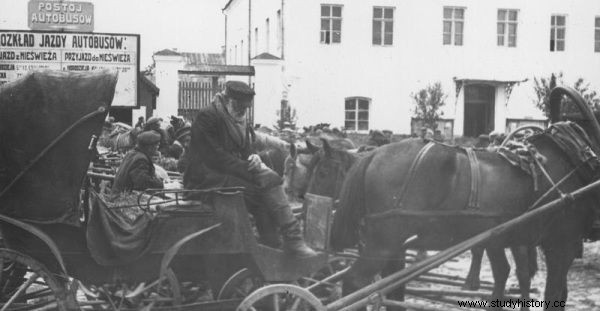
The carriage from Nesvizh ... was it being pulled by the old front stager? A veteran of the war with the Bolshevik? (photo from the Illustrated Daily Kuryer).
Grom was not only brave but also very wise. Over the years of service in the army, he learned military commands and regulations better than many cavalrymen. He followed all commands without hesitation - both by voice and by the whistleblower.
He did not make a mistake in his pace, and on the occasion of important ceremonies he gave a show of his seriousness. The horse walked proudly, dignified, with a straight head, as if it realized that it was representing a regiment and therefore must set an example of elegance.
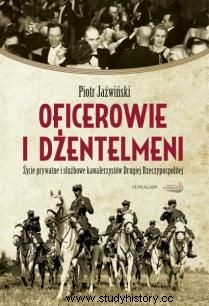
The article is based on the book by Piotr Jaźwiński entitled Officers and Gentlemen (IW Erica and Tetragon, 2011).
In the final years of his life, Grom was used only rarely in parades. His legs, which had once been pulled by powerful cannons during front service, refused to obey in his old age. The old veteran was left with nothing but a non-commissioned officer rank from the old days and dreams of a sack of oats.
Although there were screaming retirees in many cavalry units, the most famous among them was a lady who, in the interwar period, carried the most important person in the country on her back. Who are we talking about? About Mr. Marshal's Chestnut.
Unlucky pensioner…
The first mare of the Second Rzeczpospolita was born in Małopolska, in Czaple Małe, on the estate of Ludwik Popiel. The owner gave it to the 1st Brigade of the Polish Legions, specifically to its commander, Józef Piłsudski. For years she was his beloved horse, she followed the rest of the route of the 1st Brigade with him and carried him on all important occasions. In Poland, everyone knew what kind of horse this Kasztanka was. She walked proudly at every parade, gracefully picking up hooves in four socks.
She was very pleased with herself when the Marshal entered Kielce on her back. After that, she did not participate in the fighting anymore and did not listen to the roar of Bolshevik cannons. She lived peacefully in the lancers' barracks in Minsk, where she lived like the proverbial butter donut. She would probably have survived until her well-deserved retirement, only from time to time parading and parading with Piłsudski on the ridge, were it not for some unlucky journey.
On the ninth anniversary of regaining independence, on November 11, 1927, a parade was to take place in Warsaw. But how is that so? Without Kasztanki? I don't tear! The military office of the Minister of Military Affairs ordered the mares to be brought to the capital.
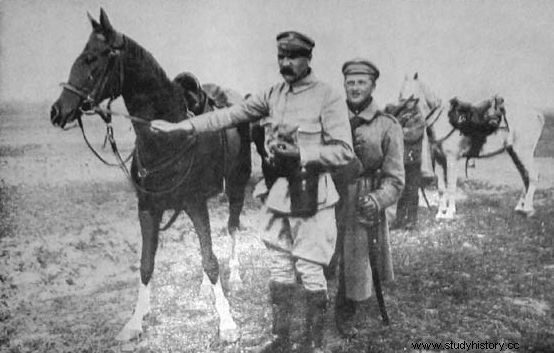
Chestnut. The real one, not a fake!
On November 3, someone deprived of imagination put poor Kasztanka into a railway carriage and sent it to Mińsk Mazowiecki - without any supervision during the journey! Along the way, the mare suffered many injuries so that she could not leave the wagon on her own, or even get up.
She was moved to the barracks and attempts were made to rescue her there, unfortunately to no avail. Even two additional vets called for help from Warsaw did not help. On November 22, Kasztanka went to the land of evergreen pastures.

The article is based on the book by Piotr Jaźwiński entitled Officers and Gentlemen (IW Erica and Tetragon, 2011).
No matter how good the fakes were, there was only one original
This story continues. The mare's skin was removed, stuffed and placed in the Belweder Palace (Kasztanka decorated the Belvedere corridors with her presence until 1935). The rest of the remains of the first mare of the Republic of Poland were buried in the barracks park of the 7th Uhlans Regiment and crushed with a stone with the inscription Here lies Kasztanka, Marshal Piłsudski's favorite combat mare .
When its famous owner was saying goodbye to the world, Kasztanka had been dead for a good few years. Nevertheless, she was so closely associated with Piłsudski that the Marshal's funeral could not take place without her, who took the funeral procession away with a slow and dignified step. Chestnut ... counterfeit. Behind Piłsudski's coffin, two officers led a horse pretending to be the famous filly, of the same color but with only three white socks.
Sources:
Basic:
- P. Jaźwiński, Officers and gentlemen. Private and business life of cavalrymen of the Second Republic of Poland , Erica, Warsaw 2011.
Complementary:
- M. Jankowski, Chestnut always alive , "Focus Historia", April 12, 2010
